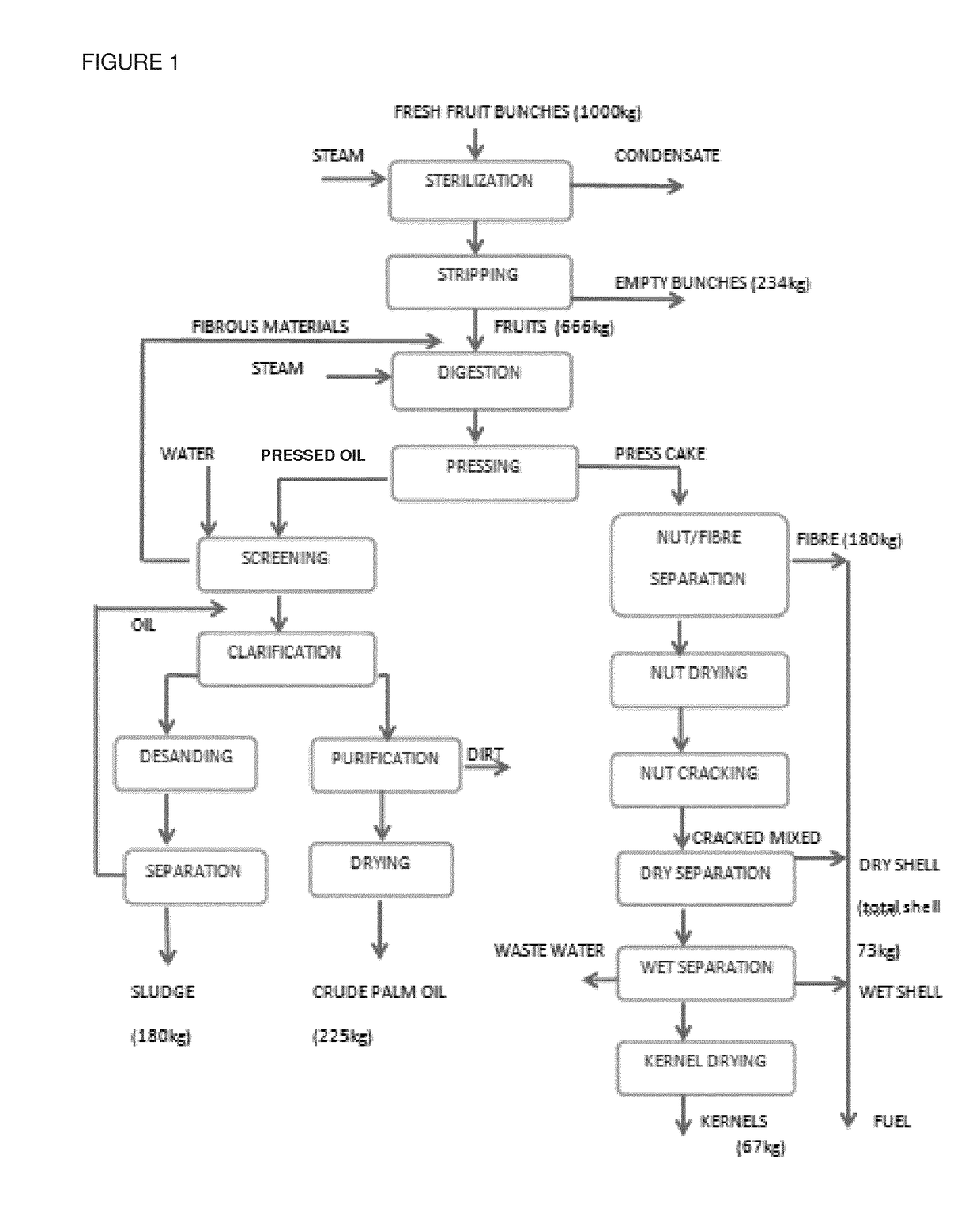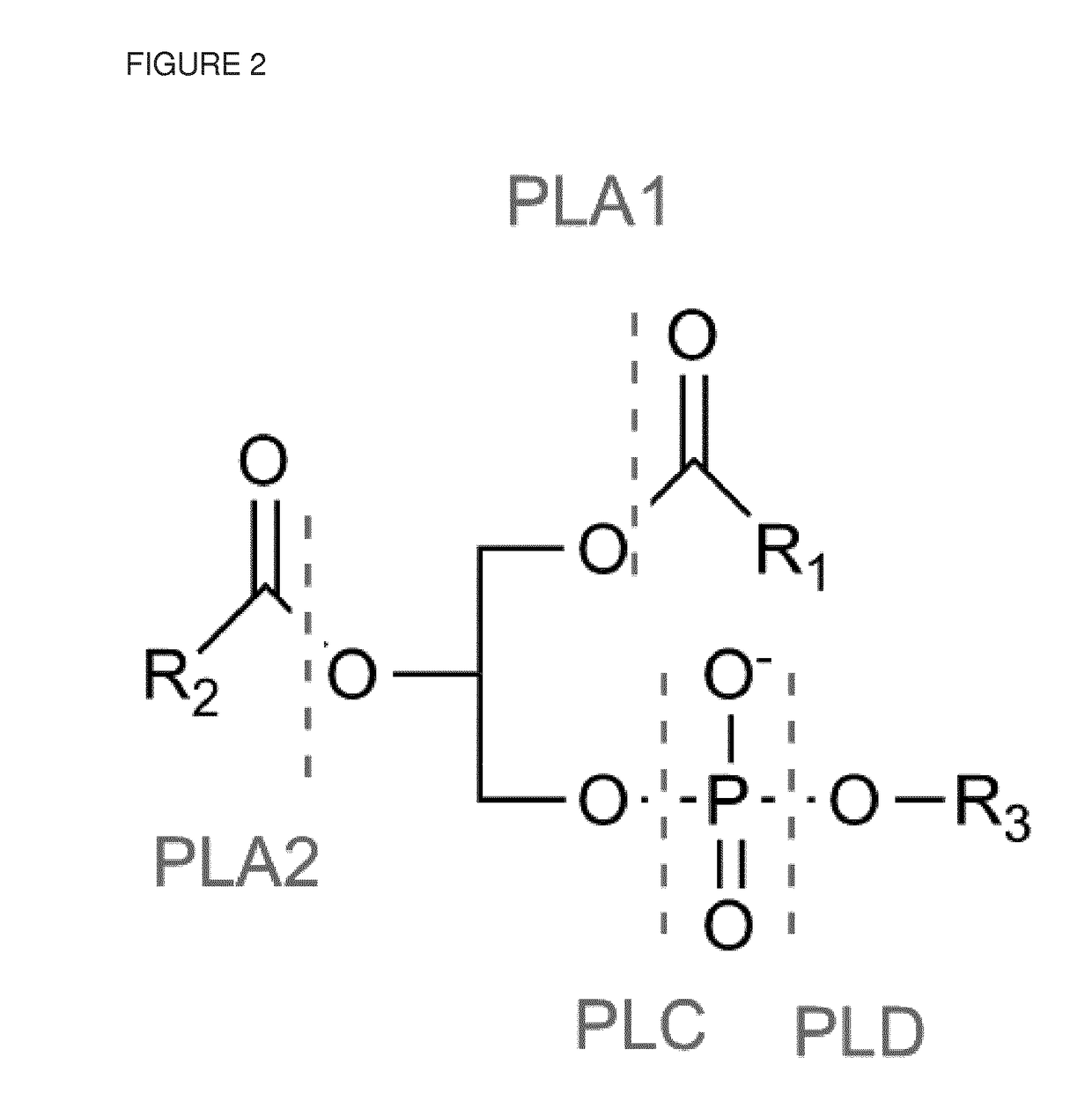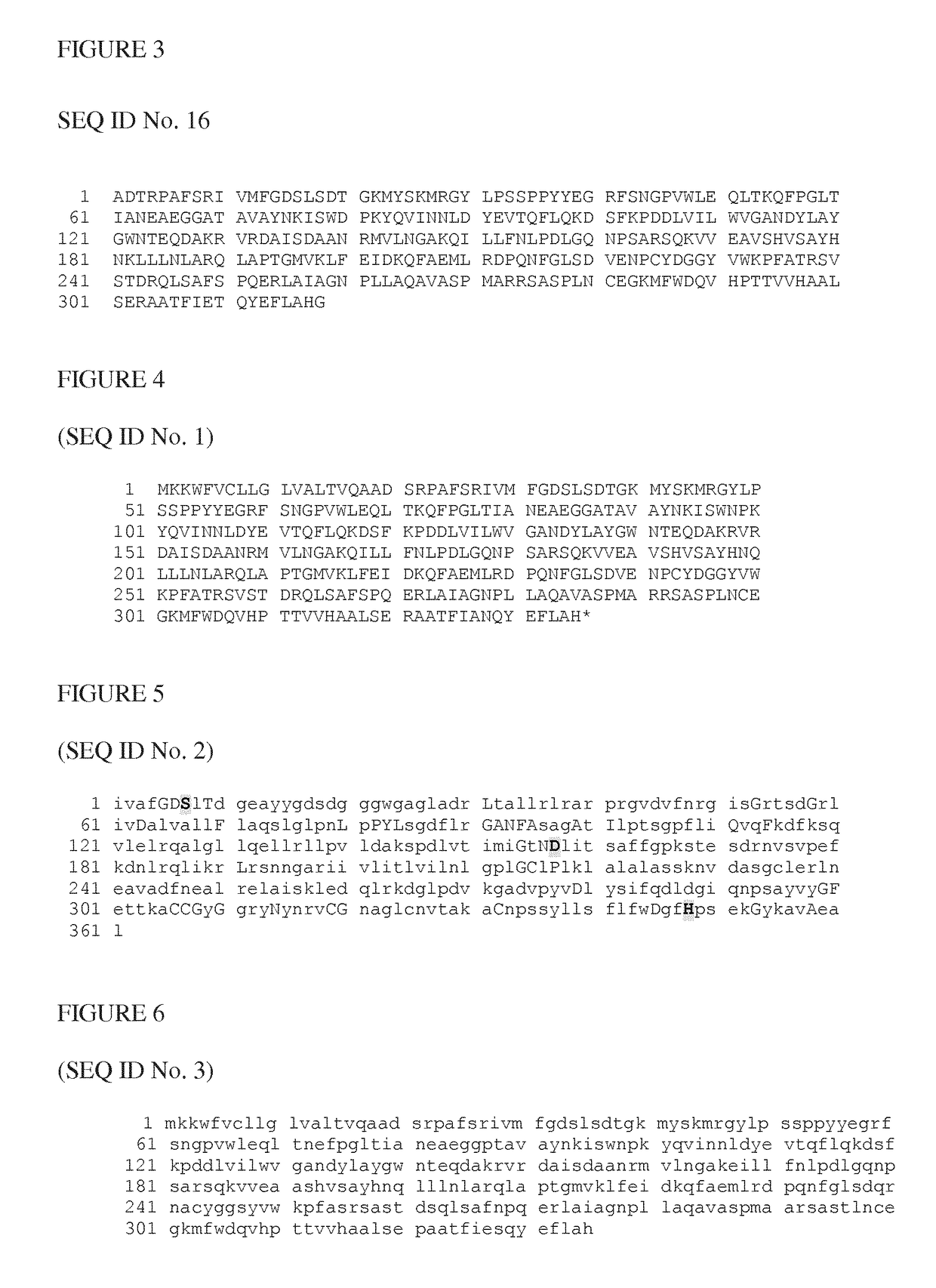Method for increasing crude palm oil yields
a crude palm oil and yield technology, applied in the direction of fatty substance production, fatty oil/fat production, etc., can solve the problems of difficult separation of oil from solid and water, 4-8 % of palm oil loss during processing, complex and extensive palm oil processing, etc., to improve crude palm oil yield and improve separation
- Summary
- Abstract
- Description
- Claims
- Application Information
AI Technical Summary
Benefits of technology
Problems solved by technology
Method used
Image
Examples
example 1
Materials and Methods
[0585]Pressed Crude Palm Oil from Paloh Palm Oil Mill, Malaysia
Obtained from pressing of digested palm mesocarp.
Water content: 64.6%
Palm fruits obtained from DuPont, Singapore
Enzymes:
LysoMax Oil, lot. 1781679258, DuPont Industrial Biosciences
[0586]Lecitase Ultra, produced by Novozymes, DK
Lipopan F, produced by Novozymes, DK
Nagase Phospholipase PLA2, produced by Nagase, Japan
Lipomod 699L, Pancreatic Phospholipase PLA2, produced by Biocatalysts, UK
Phospholipase GL541, Phospholipase PLA2 from Streptomyces coelicolor expressed in Bacillus subtilis.
PLDa, Phospholipase D from Streptomyces racemochromogenes, expressed in Bacillus subtilis
PLDb, Phospholipase D from Streptomyces avermitilis, expressed in Bacillus subtilis
Experimental Procedure
[0587]In the following experiments, the effect of enzyme on separation of crude palm oil was simulated. 10 gram crude palm oil was scaled in a Wheaton glass. A magnetic bar was added and the sample was heated to 50° C. in a heati...
example 2
Materials and Methods
[0601]Pressed crude Palm Oil from Malaysia
Obtained from pressing of digested palm mesocarp
Water Content 64.6%
[0602]Palm fruits obtained from DuPont Singapore
Water content 35%.
Enzymes:
LysoMax Oil, lot. 1781679258. DuPont Industrial Biosciences
[0603]Protex 15L, batch 1681480658, DuPont Industrial Biosciences
G-ZYME G999, batch 4862079064. DuPont Industrial Biosciences
Protex 50FP, batch A011161002, DuPont Industrial Biosciences
Experimental Procedure
[0604]In the following experiments, the effect of enzyme on separation of crude palm oil was simulated. 10 gram crude palm oil was scaled in a Wheaton glass. A magnetic bar was added and the sample was heated to 50° C. in a heating block. When the temperature had reached 50° C. enzyme was added. For experimental comparison a small volume of water was added to get the same total volume. The sample was incubated for 2 hrs at 50° C. with magnetic agitation, 450 rpm. After 2 hrs incubation the sample was transferred to a 15 m...
experiment 3
[0613]In this experiment the effect of LysoMax Oil on oil separation as a function of storage at 60° C. was investigated (Table 11). In this experiment no water was added to adjust for different volume of enzyme addition.
TABLE 1112345Crude Palm Oilg1010101010LysoMax Oilμl010050105LysoMax Oil%010.50.10.05
[0614]The experimental procedures were conducted as described under Experimental Procedures above with the modification that after enzyme inactivation the samples were placed in a heating cabinet at 60° C., and the amount of oil separated after 1 and 2 hr was measured.
[0615]The effect of Lysomax oil on oil separation is illustrated in FIG. 73.
[0616]The amount of oil separated after heat inactivation after storage at 60° C. was measured and with the results in Table 12.
TABLE 12Oil separation12345After heat inactivation %7.629.329.714.116.5After 60 min at 60° C.%11.030.730.116.520.7After 120 min at 60° C.%10.830.230.217.623.0
[0617]The experiment confirmed that Lysomax Oil has a strong ...
PUM
| Property | Measurement | Unit |
|---|---|---|
| temperatures | aaaaa | aaaaa |
| permissive temperature | aaaaa | aaaaa |
| temperature | aaaaa | aaaaa |
Abstract
Description
Claims
Application Information
 Login to View More
Login to View More - R&D
- Intellectual Property
- Life Sciences
- Materials
- Tech Scout
- Unparalleled Data Quality
- Higher Quality Content
- 60% Fewer Hallucinations
Browse by: Latest US Patents, China's latest patents, Technical Efficacy Thesaurus, Application Domain, Technology Topic, Popular Technical Reports.
© 2025 PatSnap. All rights reserved.Legal|Privacy policy|Modern Slavery Act Transparency Statement|Sitemap|About US| Contact US: help@patsnap.com



